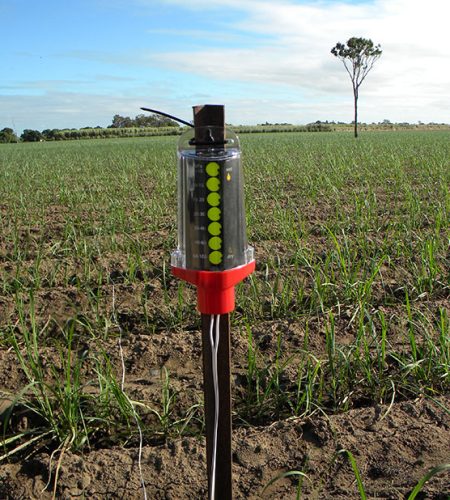Dr Marcus Hardie
Project Leader
University of Tasmania
There are a range of constraints to the use of soil sensors (moisture) on a farm. The ”Smart’ soil sensors’ project (2.2.002) will develop the next generation of ‘Smart’ sensors that will overcome the problems associated with above ground sensors, transmit data over large areas, and automatically interpret sensed data in order to provide farmers with actionable information rather than just data.
This project will develop the next generation of field-based sensors that can measure, map, interpret, and communicate sensor data using new approaches that meet growers’ need for information in order to make on-farm decisions.
The ‘Smart’ Shovel: A shovel that can measure soil moisture and salinity and will include compaction sensors which will all be mapped and visualised through smart phones whilst in the paddock.
Below Ground Sensor Data Transmission: Send sensor data wirelessly through soil, so that sensors can be fully buried without risk of damage from stock, pests or machinery.
Self-learning moisture sensors: Develop algorithms that use existing soil moisture sensors to learn the soil properties needed for use with models such as APSIM & Yield Profit, and enable growers to relate moisture content to crop stress.
This project seeks to build and develop technologies and provide sensors with the functionalities that growers actually want. They want sensors that do not obstruct machinery and that result in actionable information. This project is the first step in developing the next generation of field-based sensors that growers are seeking to support sustainable and precise management decisions and to improve soil function.
The scope of this project has been intentionally limited to a proof of concept stage, with the understanding that should the proof of concept be successful, further investment will be required to develop a market-ready product or service offering. A utilisation plan will be developed during the second phase of project.
This project will provide farmers with an improvement in on-farm decision making based on data and information, an improved understanding and interpretation of sensed data, improved irrigation and nutrient efficiency, greater uptake of modelling technology, increased profitability and reduced soil damage.
They will run a series of facilitated on-line and in-person meetings among approximately 20 Soil CRC members working with Program 1.2 and 1.3, and in other Soil CRC Programs, in particular Program 4.

